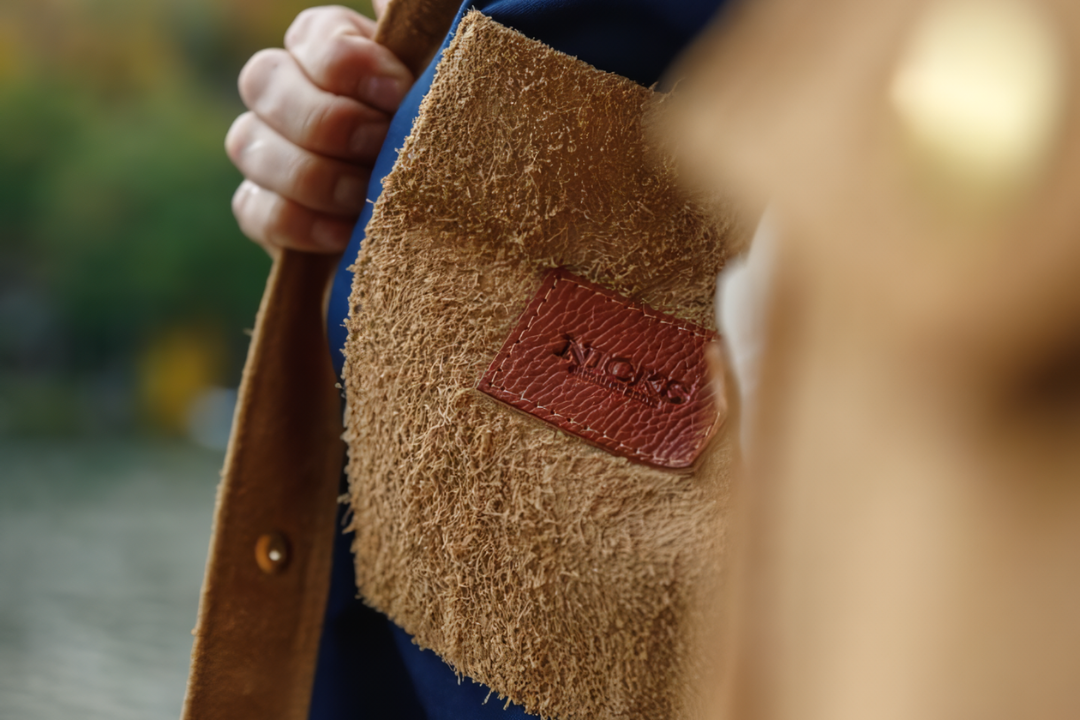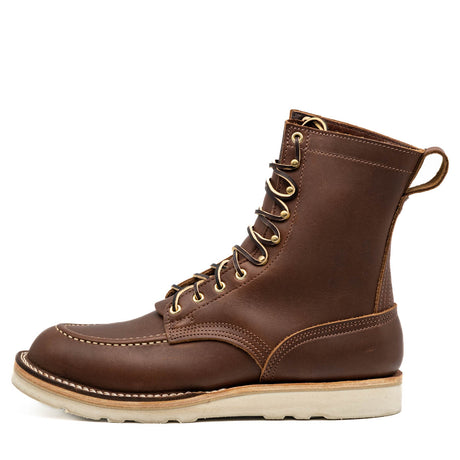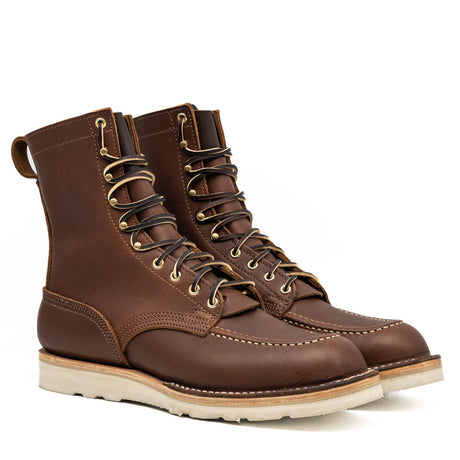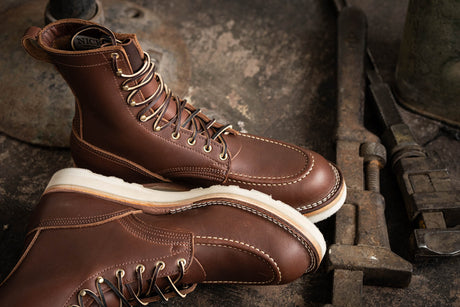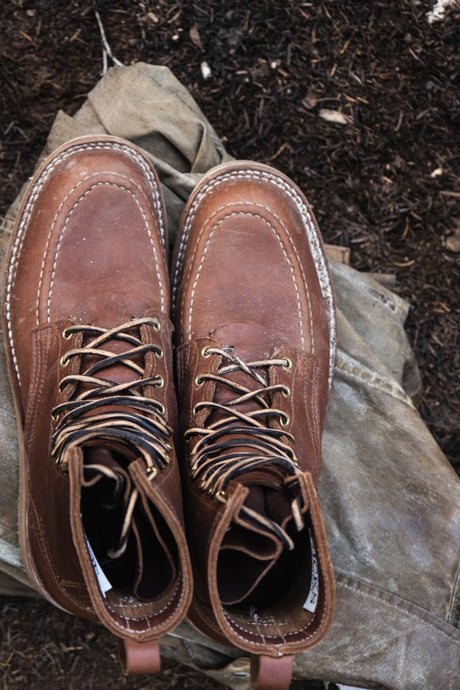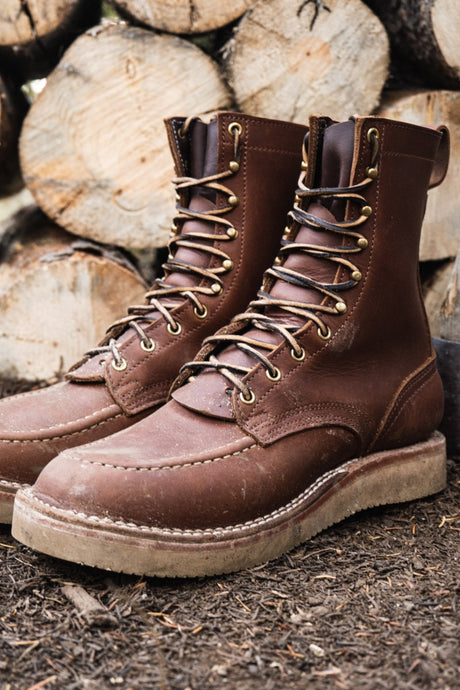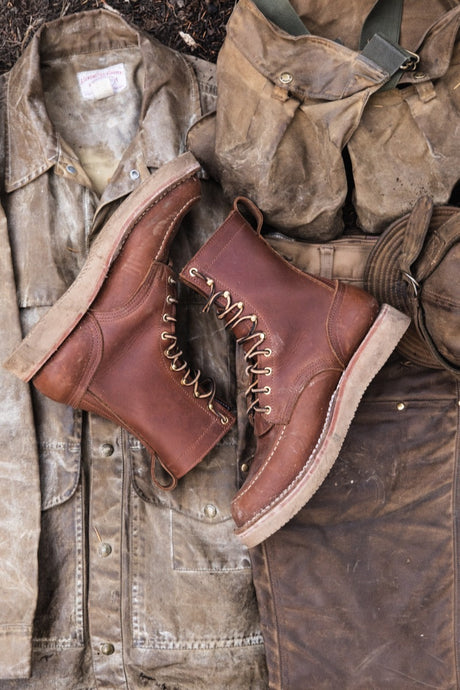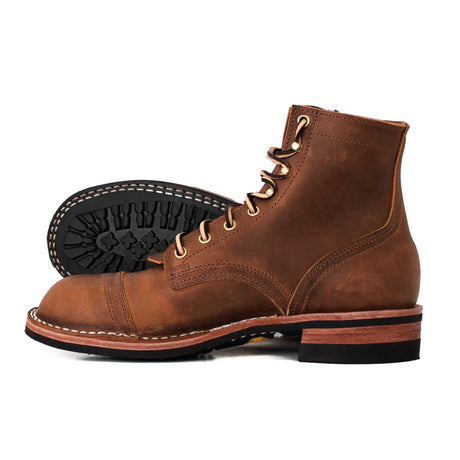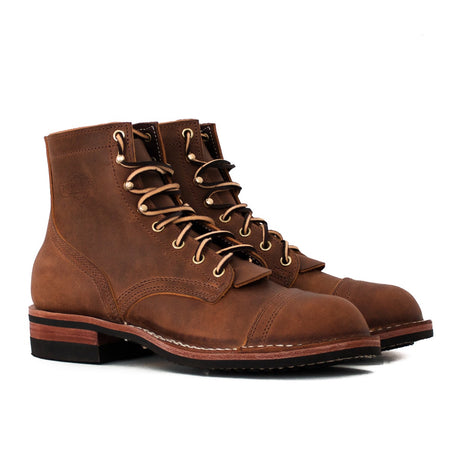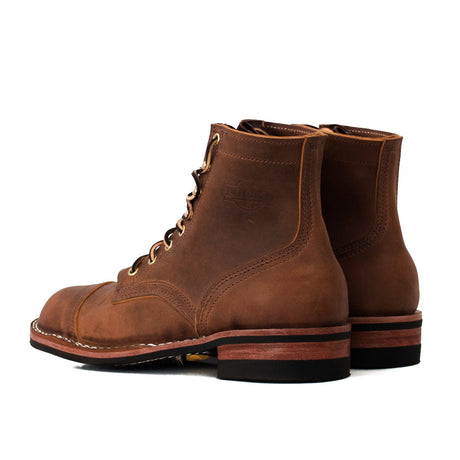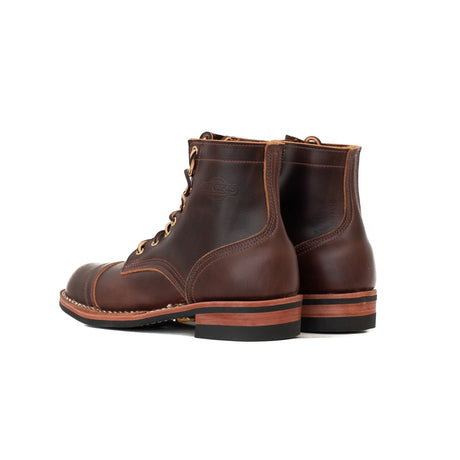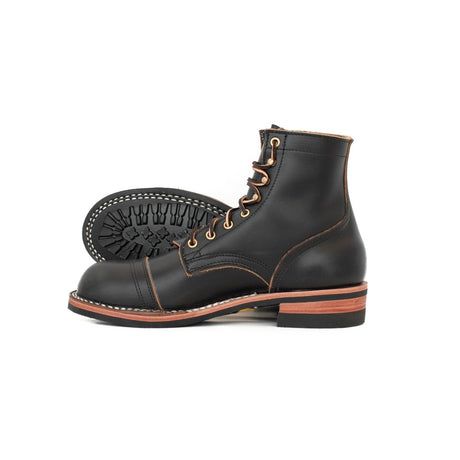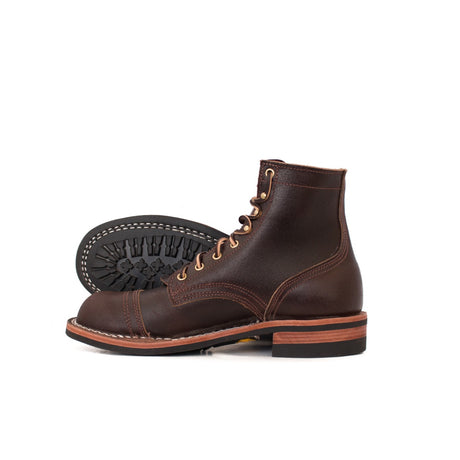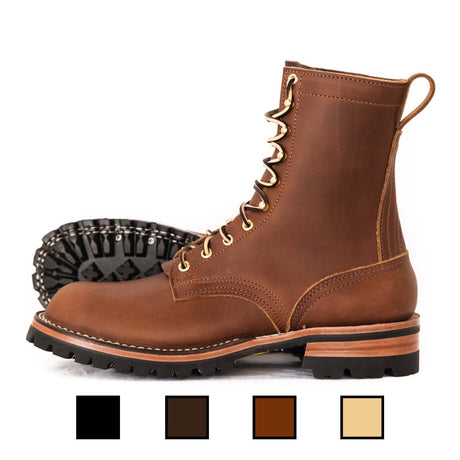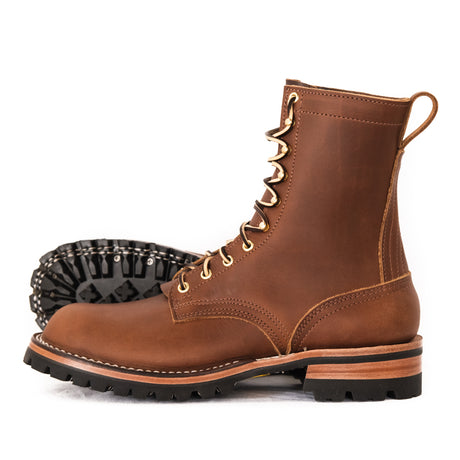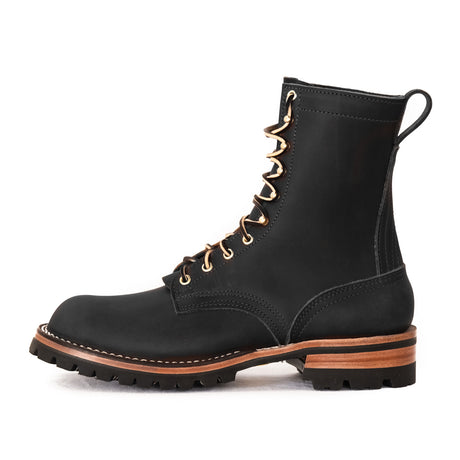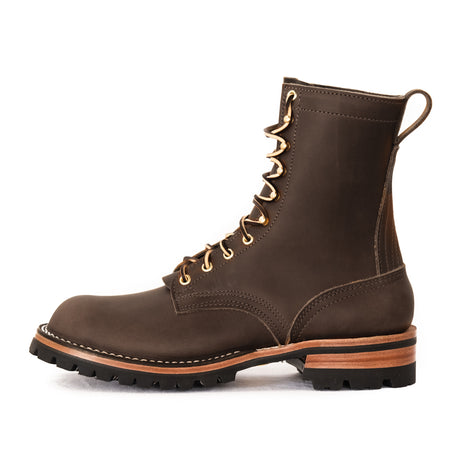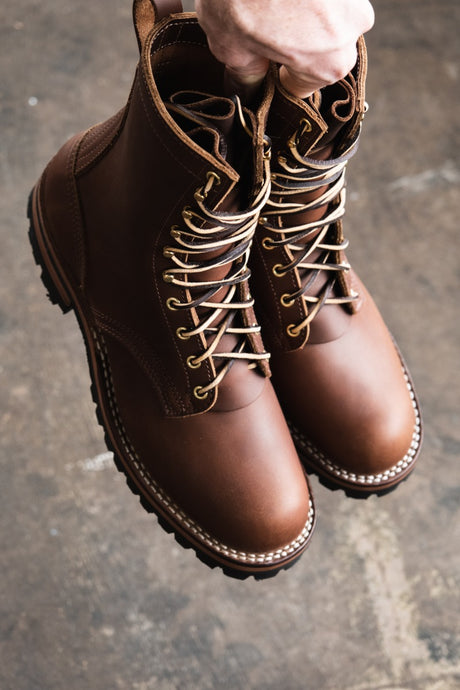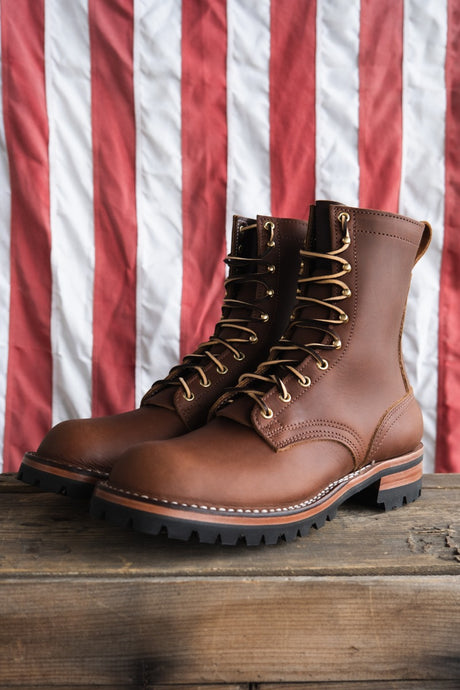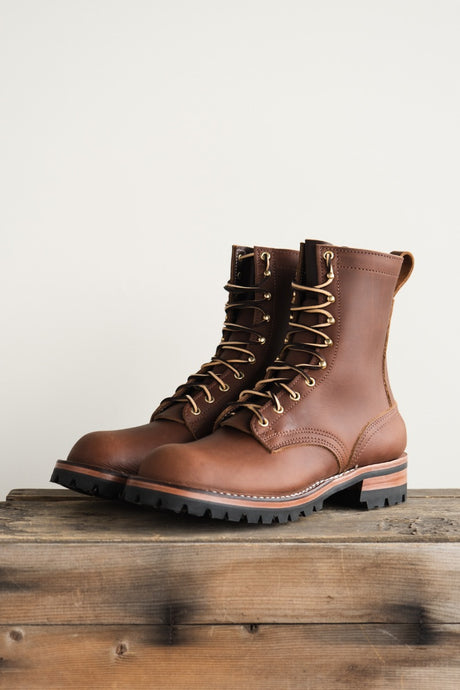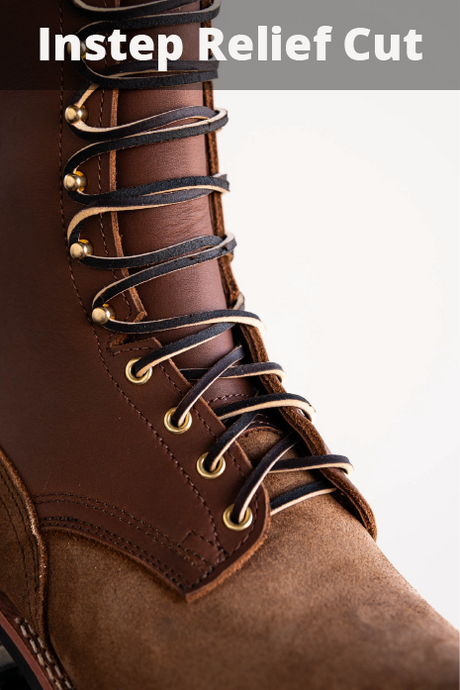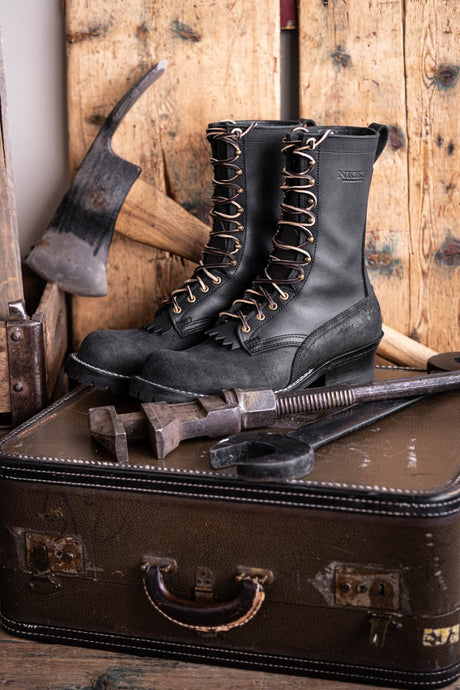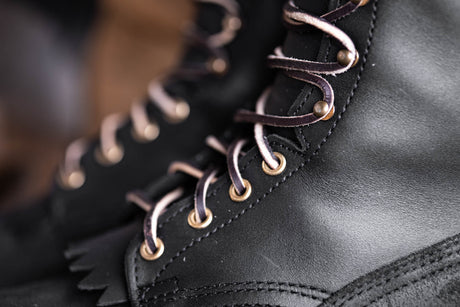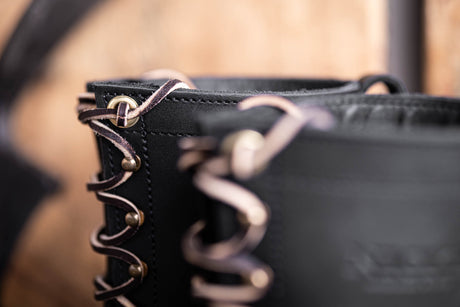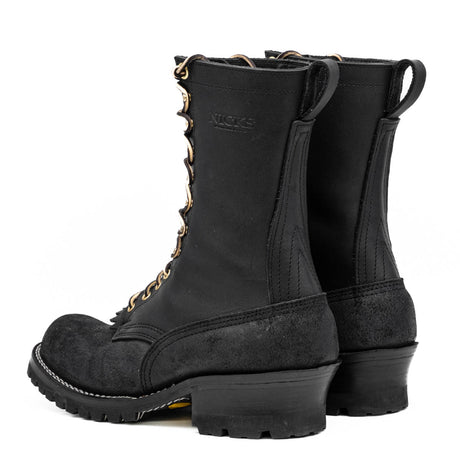Key Takeaways:
- Not All Scratches Are the Same: Light scratches can be buffed out easily, but deeper ones require conditioning, repair creams, or professional restoration to prevent permanent damage.
- Proper Leather Care Prevents Scratches: Regular conditioning, proper storage, and protective sprays help keep leather jackets smooth and resistant to scuffs and marks.
- DIY Fixes Work, but Professionals Help with Severe Damage: At-home remedies like buffing and conditioning work for small scratches, but deep cuts and discoloration may require professional repair for the best results.
A scratch on a leather jacket can feel like a blemish on its character, disrupting its smooth and timeless appeal. Whether it’s a light scuff from everyday wear or a deeper mark from an accidental scrape, these imperfections can take away from the jacket’s polished look. But don’t worry—most scratches aren’t permanent, and they can be easily repaired with the right approach.
At Nicks Boots, we don’t just sell leather—we understand it. With years of expertise in crafting premium leather goods, we know what it takes to keep them in top condition. Quality leather is built to last, and with proper care, your favorite jacket can maintain its rich texture and sleek appearance for years to come.
This guide will walk you through practical steps to remove scratches from leather, whether minor surface marks or more noticeable damage. From quick at-home fixes to professional restoration tips, we’ll help you bring your leather jacket back to life.
Understanding Leather Scratches: Surface vs. Deep Damage
Not all scratches on leather are the same. Some are mere surface marks that only affect the outermost layer, while others cut deeper, altering the texture and feel of the leather. Identifying the type of scratch is the first step in determining the best way to restore your jacket.
For instance, jackets like the Leather Patriot Type 3 Jacket and Ranchman Jacket may develop surface scratches from minor friction or contact with rough surfaces. These light, shallow marks can be treated with simple conditioning and buffing techniques. However, deeper scratches that penetrate the leather’s protective layer, potentially affecting its structure, require more intensive restoration methods.

Quick Fixes For Light Scratches
Light scratches on leather may look concerning, but they’re often easy to fix with the right approach. Since these marks only affect the surface, simple techniques can restore your jacket’s smooth, polished look without requiring professional repairs.
- Buffing with a Soft Cloth: Gently rubbing the scratched area with a clean, dry microfiber or cotton cloth can sometimes work wonders. The friction from buffing helps redistribute the natural oils in the leather, blending the scratch into the surrounding surface. For best results, use circular motions and apply light pressure.
- Applying Leather Conditioner: Leather conditioners restore moisture and elasticity, reducing the visibility of light scratches. Apply a small amount using a soft cloth, massaging it into the scratch and surrounding area. Let it absorb for a few minutes before buffing off any excess. This not only improves the appearance of the scratch but also nourishes the leather to prevent future damage.
- Using a Bit of Olive or Coconut Oil: For quick, natural fixes, a small dab of olive or coconut oil can help blend shallow scratches into the leather. Apply with a cotton swab or fingertip, then buff gently with a soft cloth. Be sure to use only a minimal amount to avoid over-saturating the leather, which can lead to dark spots.
With these simple methods, minor scratches can be repaired in minutes, keeping your jacket looking as good as new.
Removing Deeper Scratches And Scuffs
Simple buffing won’t be enough to fix the damage when a scratch goes beyond the surface. Deeper scratches penetrate the leather’s protective coating, making them more visible and sometimes even exposing the raw material underneath. However, with the right repair techniques and products, you can significantly improve the appearance of your leather jacket and extend its lifespan.
Cleaning The Area First
Before attempting any repairs, it's crucial to thoroughly clean the scratched area to remove any dirt, dust, or oils that may interfere with the repair process. Use a damp cloth with a mild leather cleaner, gently wiping the affected area without oversaturating the leather. After cleaning, allow the leather to dry completely to ensure the repair products adhere properly.
Using Leather Repair Cream
Leather repair creams or balms are specifically designed to fill in deep scratches and restore a smooth surface. Apply a small amount of the cream directly onto the scratch using a soft cloth or your fingertip, working it into the leather with circular motions. Let the product absorb for a few minutes before gently buffing off any excess to blend seamlessly into the surrounding material.
Applying Leather Dye (If Needed)
If the scratch has stripped some of the color from the leather, applying a matching dye can help restore a uniform appearance. Use a cotton swab or a small applicator brush to carefully dab the dye onto the affected area, blending it gently with the surrounding leather. Allow the dye to dry completely before finishing with a leather conditioner to nourish the material and lock in the color.
Sealing With Leather Wax Or Polish
After repairing the scratch, applying a leather wax or polish will help protect the surface and restore its original shine. This step also creates a barrier against future damage, reducing the chances of new scratches becoming as noticeable. Regularly conditioning and polishing your leather jacket will keep it looking sleek and well-maintained for years to come.
Conditioning And Protecting Your Leather Jacket
Restoring scratches is just one part of leather care, but maintaining your jacket’s condition requires ongoing attention and preventative measures. Leather is a natural material that can dry out, crack, or become more vulnerable to damage if not properly maintained. Regular conditioning and protection help preserve its durability, ensuring it stays soft, flexible, and resistant to wear.
Use A Quality Leather Conditioner
Leather naturally loses moisture over time, which can cause it to become stiff and brittle and more prone to scratches or cracks. Applying a high-quality leather conditioner every few months helps restore essential oils, keeping the material soft, supple, and resilient. Use a soft cloth to apply a small amount in circular motions, ensuring even coverage before buffing away any excess product.
Store It Properly
Improper storage can lead to creases, fading, and unnecessary wear, shortening the lifespan of your leather jacket. Always store your jacket in a cool, dry place, away from direct sunlight or heat sources that can dry out the leather and cause discoloration. Using a padded or wide-shouldered hanger helps maintain its natural shape and prevents stress points from forming along the shoulders or seams.
Avoid Harsh Chemicals And Water Exposure
Leather is sensitive to excessive moisture, harsh detergents, and strong chemicals, which can strip away its natural oils and damage the surface. If your jacket gets wet, allow it to air dry naturally at room temperature, avoiding direct heat sources like hairdryers or radiators, which can cause cracking. Always use a mild leather cleaner designed for delicate materials instead of household soaps or alcohol-based solutions that can weaken the leather over time.
Apply A Leather Protectant
For extra defense against the elements, consider using a leather protectant spray to add an invisible barrier against dirt, moisture, and minor scuffs. These sprays are particularly useful if you frequently wear your jacket in unpredictable weather or rugged environments. Regular application helps maintain the jacket’s appearance and longevity, reducing the chances of deep scratches or stains setting into the material.
When To Seek Professional Help
While many scratches and scuffs can be fixed at home, some leather damage requires expert care. If a scratch is too deep, causing structural damage or exposing the inner layers, at-home methods may not fully restore the leather. A professional leather specialist has the tools and expertise to repair severe damage, ensuring your jacket looks as good as new.
- Deep Cuts or Tears: If a scratch has turned into a full tear or a deep gouge, at-home solutions may not be enough to seal the damage properly. Leather professionals use high-quality fillers, adhesives, and refinishing techniques to seamlessly blend the affected area with the rest of the jacket. This prevents the damage from worsening and restores the jacket’s durability and aesthetic appeal.
- Severe Discoloration or Staining: Leather dye can help with minor color loss, but severe fading, stains, or uneven coloration requires expert color-matching and refinishing. Professionals can restore your jacket's original shade using specialized dyes and treatments, ensuring a consistent and natural look. This process also enhances the jacket’s overall vibrancy, making it look refreshed and well-maintained.
- Extensive Wear and Aging: Over time, leather naturally develops cracks, dryness, and multiple scuffs that can make it look worn out. Professional deep cleaning and conditioning treatments help rejuvenate the leather by restoring its natural oils and moisture balance. This extends the jacket’s lifespan while bringing back its softness, sheen, and flexibility.
- High-End or Sentimental Pieces: If your leather jacket is a designer item, a vintage piece, or holds sentimental value, professional care ensures the highest-quality restoration. Experts use non-damaging techniques to maintain the leather's integrity while fixing scratches and other imperfections. Investing in professional care preserves the jacket's craftsmanship, allowing you to wear it confidently for years.
Sometimes, a professional touch is the best way to ensure your leather jacket stays in top condition. With the right combination of at-home care and expert assistance when needed, your jacket can maintain its luxurious feel and polished look. If you're unsure whether a scratch can be repaired at home, consulting a professional can save you time and prevent further damage.

Final Thoughts
A well-maintained leather jacket isn’t just about aesthetics—it’s about preserving the craftsmanship, durability, and character that make leather unique. Scratches are a natural part of the journey, adding to the story rather than diminishing its value. With the right approach, from routine care to expert restoration when needed, leather can withstand the test of time while retaining its rich texture and elegance. Investing in proper maintenance ensures that your leather jacket remains not just a piece of clothing but a lasting statement of quality and style.
Read also:
Frequently Asked Questions About How To Get Scratches Out Of Leather
Can you remove scratches from all types of leather jackets?
Not all leather reacts the same way to scratch repair methods. Smooth-finish leathers like full-grain or top-grain can often be restored more easily than suede or nubuck. For delicate leathers, professional treatment is the safest option.
Will scratches on leather jackets get worse over time?
Yes, if left untreated, scratches can deepen as the leather dries out and loses its protective oils. Regular conditioning helps prevent further damage by keeping the leather supple. Deep scratches can also collect dirt, making them more noticeable over time.
Can you use household products to fix leather scratches?
Certain household items like olive oil or coconut oil can help blend light scratches temporarily. However, overuse may cause dark spots or excessive moisture absorption, leading to long-term damage. It’s always best to use leather-specific conditioners and repair products.
Do leather scratches affect the durability of the jacket?
Surface scratches are usually cosmetic and don’t impact the jacket’s durability. However, deep scratches that penetrate the protective layer can weaken the leather, making it more prone to cracks and tears. Proper care and conditioning help maintain the strength of the material.
How can I prevent future scratches on my leather jacket?
Regular conditioning keeps the leather flexible and less prone to surface damage. Storing your jacket on a padded hanger, avoiding rough surfaces, and applying a leather protectant spray also help. Being mindful of where and how you wear your jacket can reduce unnecessary scuffing.
Can heat or sunlight help fix scratches on leather?
Applying mild heat, like using a hairdryer on low, can help redistribute natural oils and minimize the appearance of small scratches. However, excessive heat and direct sunlight can dry out leather, leading to more damage. Always follow up with a leather conditioner to restore moisture.
Is shoe polish a good option for covering scratches on a leather jacket?
Shoe polish can temporarily mask scratches, but it is not a long-term fix for leather jackets. The wax-based formula may not fully blend into jacket leather and can rub off on clothing. A leather dye or cream specifically designed for garments provides a more lasting solution.
Will water make scratches worse on a leather jacket?
Yes, excessive water can dry out the leather and make scratches more noticeable by altering the texture. If your jacket gets wet, blot it dry with a soft cloth and apply a leather conditioner once it's fully dry. Avoid using direct heat sources to speed up drying, as this can lead to cracking.
Can I use petroleum jelly to fix leather scratches?
Petroleum jelly can help moisturize and soften leather, making light scratches less visible. However, if not wiped off properly, it can also leave a greasy residue and attract dirt. Leather-specific creams and balms are a better choice for effective, long-term results.
Should I get a professional leather repair for minor scratches?
For minor surface scratches, home remedies and conditioning are usually enough. Professional repair is recommended for deep cuts, discoloration, or extensive wear that DIY solutions can’t fix. A professional touch can help maintain its value and longevity if your jacket is an investment piece.



